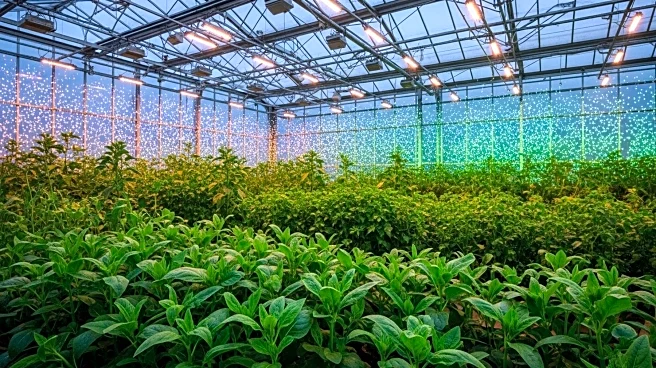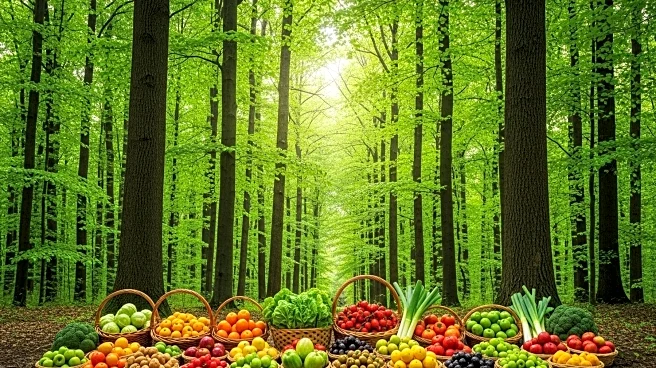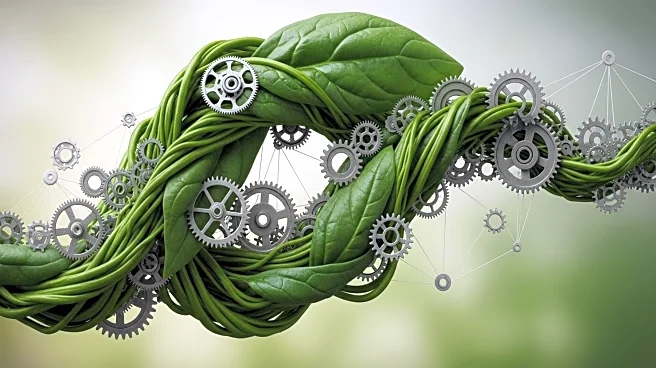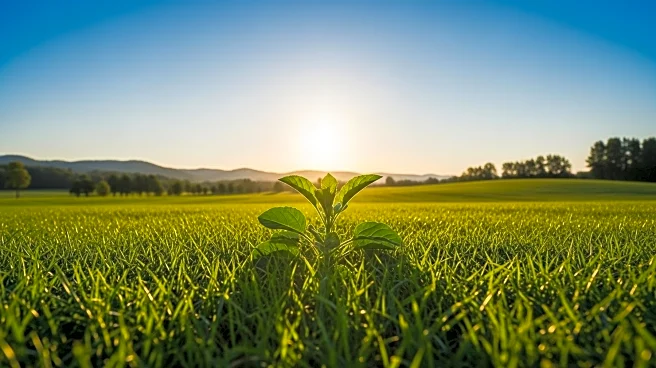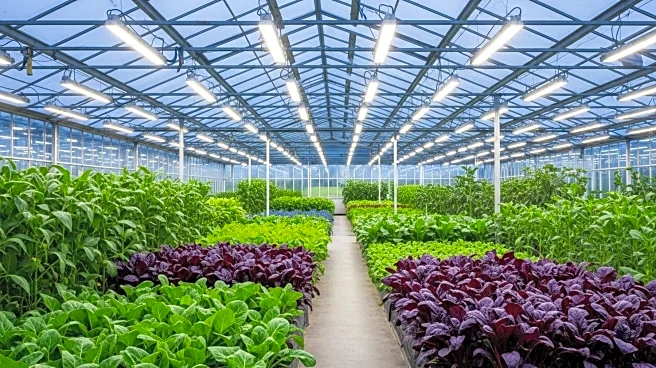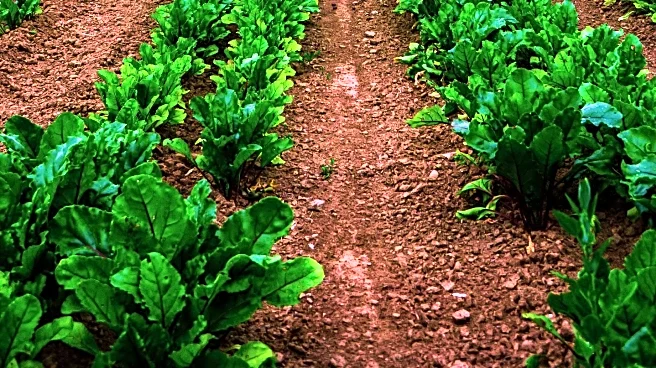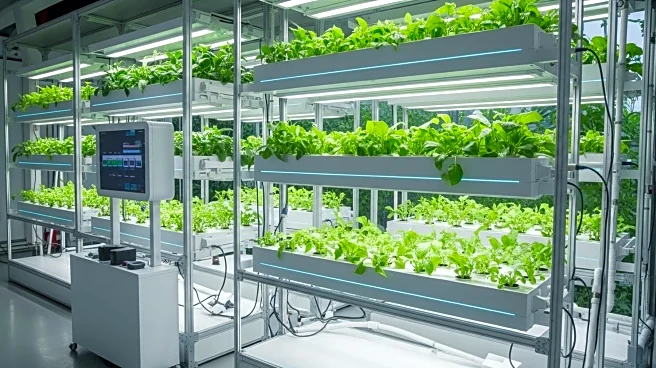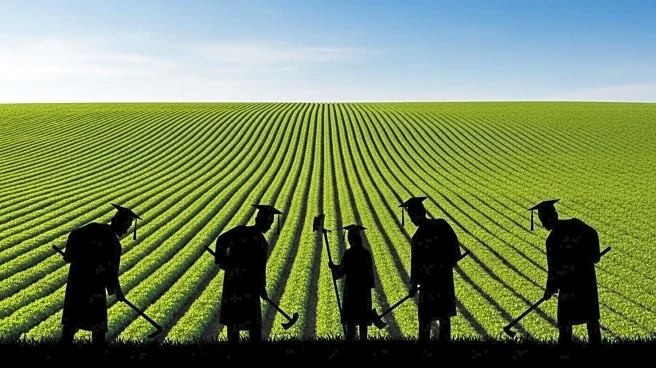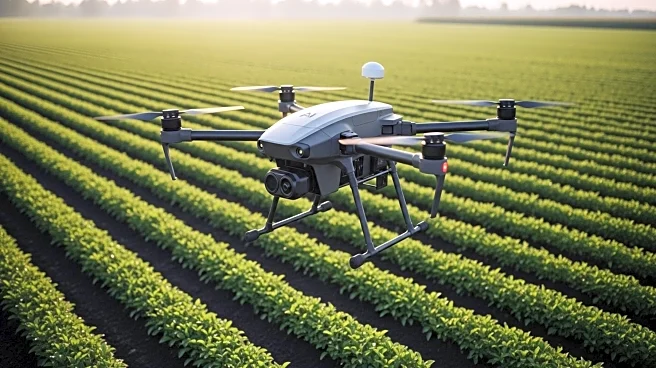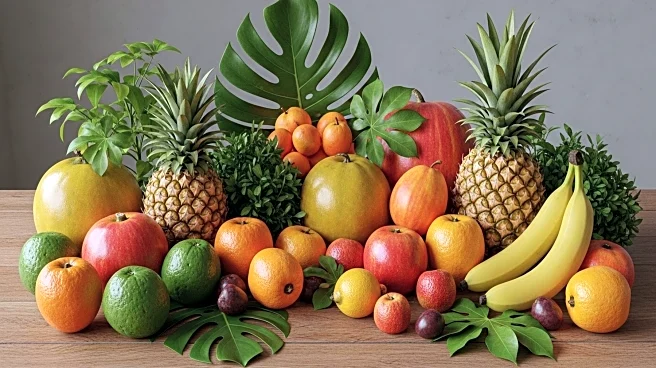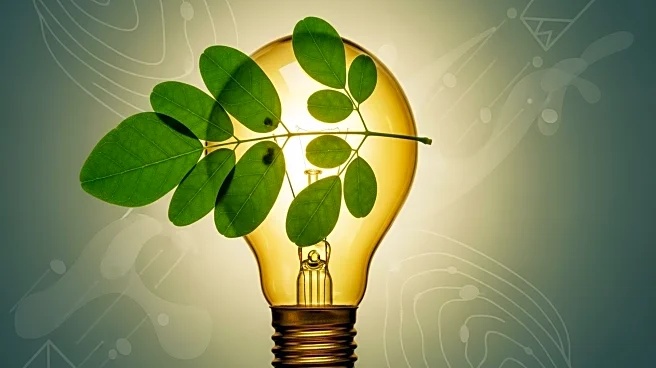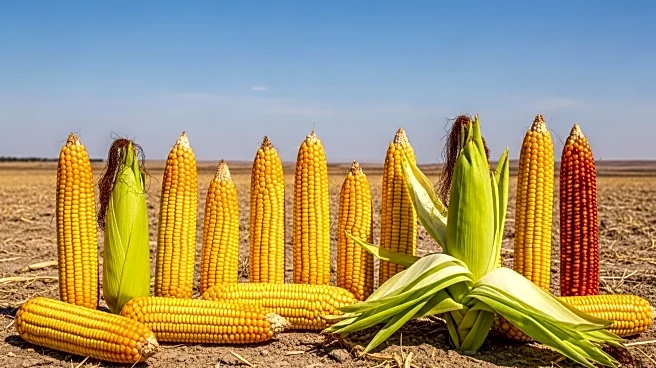What is the story about?
What's Happening?
UbiQD, a company specializing in quantum dot materials, has announced the results of a USDA-funded study conducted at the University of California, Davis. The study demonstrates that UbiQD's luminescent quantum dot-laminated glass significantly improves plant growth, nutrient uptake, and energy efficiency in controlled-environment agriculture settings. The research, published in Materials Today Sustainability, shows that the use of quantum dot-infused glass in greenhouses can lead to a 37.8% increase in fresh biomass, a 38.0% increase in leaf area and root length, and a 41.0% improvement in light-use efficiency. These findings suggest that spectrum-optimized glass can enable high-yield, year-round production, particularly in colder climates and energy-constrained regions.
Why It's Important?
The study's findings are crucial for addressing global food production challenges, including rising demand, land and water scarcity, and climate volatility. By enhancing plant growth and energy efficiency without additional electricity or mechanical input, UbiQD's technology offers a sustainable solution for increasing agricultural productivity. This innovation could help reduce resource use and greenhouse gas emissions, contributing to more resilient and sustainable food systems. The potential for widespread adoption of quantum dot glass in agriculture could transform greenhouse farming, making it more viable in diverse climates and regions.
Beyond the Headlines
The integration of quantum dot technology into agriculture represents a significant advancement in photonics and sustainable intensification. This approach aligns with broader efforts to develop climate-smart agricultural practices that optimize light and energy use. The study highlights the potential for spectral engineering to play a key role in future agricultural strategies, offering a promising pathway for integrating photonics with sustainable food and energy solutions.
AI Generated Content
Do you find this article useful?
